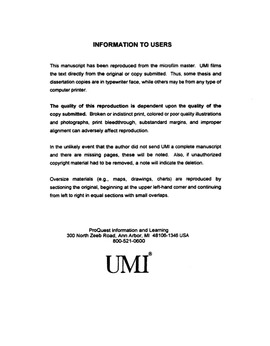| dc.contributor.advisor | Stalford, Harold, | en_US |
| dc.contributor.author | Leming, Sarah Kathryn. | en_US |
| dc.date.accessioned | 2013-08-16T12:18:50Z | |
| dc.date.available | 2013-08-16T12:18:50Z | |
| dc.date.issued | 2003 | en_US |
| dc.identifier.uri | https://hdl.handle.net/11244/543 | |
| dc.description.abstract | In this work, we discuss the development of a bridge weigh-in-motion (WIM) algorithm to predict axle weights to within 1% for +/-1 x 10-6m measurement noise. WIM systems that use bridges as scales are already in limited use, but they are only able to predict axle weights to within 10--15%, in part due to the models used to represent the bridge and the truck. We are proposing a method to estimate truck axle weights, axle spacing, and speed that includes the dynamic properties of both the bridge and the truck, as well as the static effects of the truck weight, therefore, improving the axle weight estimates. Estimates of the truck's dynamic properties, including natural frequencies, damping ratios, and initial conditions, are also found. | en_US |
| dc.description.abstract | To identify the truck, the deflection profiles over time at given measurement locations are calculated. An optimization routine is then employed to determine the set of truck parameters that produces the closest match to the "measured" deflection profile. Throughout this work, the bridge is modeled as a simply-supported Euler beam. Two truck models are used to represent the truck. The first treats each axle of the truck as a moving point force and considers only the static weight of each axle. Using this static truck model, only axle weights and axle spacing are unknown and treated as optimization parameters. The second truck model is a 2 degree-of-freedom 'quarter-car' model that represents the static weight as well as the dynamic behavior of the truck. The coupled bridge/truck equations of motion are developed and integrated to expressly include the interaction between the two. In this model, the static axle weights and axle spacing are again unknown as are the natural frequencies, damping ratios, and initial conditions of each mode of each axle. (Abstract shortened by UMI.) | en_US |
| dc.format.extent | xxi, 214 leaves : | en_US |
| dc.subject | Trucks Weight. | en_US |
| dc.subject | Bridges Vibration. | en_US |
| dc.subject | Engineering, Civil. | en_US |
| dc.subject | Motor vehicle scales. | en_US |
| dc.subject | Engineering, Mechanical. | en_US |
| dc.subject | Bridges Design and construction. | en_US |
| dc.title | Bridge weigh-in-motion (WIM) algorithm for estimating axle weights, axle spacing, and other truck parameters. | en_US |
| dc.type | Thesis | en_US |
| dc.thesis.degree | Ph.D. | en_US |
| dc.thesis.degreeDiscipline | School of Aerospace and Mechanical Engineering | en_US |
| dc.note | Source: Dissertation Abstracts International, Volume: 63-12, Section: B, page: 6058. | en_US |
| dc.note | Adviser: Harold Stalford. | en_US |
| ou.identifier | (UMI)AAI3073701 | en_US |
| ou.group | College of Engineering::School of Aerospace and Mechanical Engineering | |
